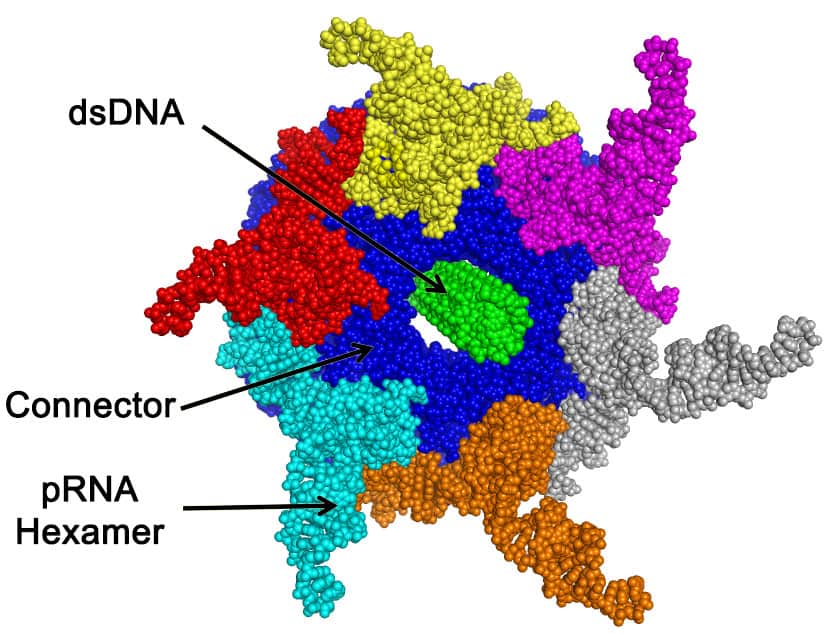
One of nature’s many types of molecular motors combines protein and RNA subunits to force viral (in this case, bacteriophage) DNA into a protein capsid. The understanding of the molecular mechanism by which this motor works has been advanced by the discovery that it revolves the DNA around a central channel, as the Earth revolves around the sun, rather than by rotating, as the Earth does about it axis. A hat tip to ScienceDaily for pointing to this research. From a University of Kentucky news release “Guo lab discovers new class of revolution biomotor and solves mystery in viral DNA packaging:”
Scientists at the University of Kentucky have cracked a 35-year-old mystery about the workings of natural “biomotors.” These molecular machines are serving as models for development of synthetic nanomotors that will someday pump therapeutic DNA, RNA or drugs into individual diseased cells.
The report, revealing the innermost mechanisms of these motors in a bacteria-killing virus and a “new way to move DNA through cells,” is being published online today in the journal ACS Nano.
The article, “Mechanism of One-Way Traffic of Hexameric Phi29 DNA Packaging Motor with Four Electropositive Relaying Layers Facilitating Anti-Parallel Revolution,” can be downloaded with free, open access from http://pubs.acs.org/doi/abs/10.1021/nn4002775.
Peixuan Guo, director of the UK Nanobiotechnology Center, and his colleagues explain that two motors have been found in nature: A linear motor and a rotating motor. Now they report discovery of a third type, a revolving molecular motor.
Guo points out that nanomotors will open the door to practical machines and other nanotechnology devices so small that 100,000 would fit across the width of a human hair. One major natural prototype for those development efforts has been the motor that packages DNA into the shell of bacteriophage phi29, a virus that infects and kills bacteria.
Guo’s own research team wants to embed a synthetic version of that motor into nanomedical devices that are injected into the body, travel to diseased cells and pump in medication. A major barrier in doing so has been uncertainty and controversy about exactly how the phi29 motor moves. Scientists thought that it worked by rotating or spinning in the same motion as the Earth turning once every 24 hours upon its own axis.
In their ACS Nano paper, Guo — with his team, Zhengyi Zhao, Emil Khisamutdinov, and Chad Schwartz — challenge that idea. Indeed, they discovered that the phi29 motor moves DNA without any rotational motion. The motor moves DNA with a revolving in the same motion as the Earth revolving around the sun in one orbit ever 365 days. The “revolution without rotation” model could resolve a big conundrum troubling the past 35 years of painstaking investigation of the mechanism of these viral DNA packaging motors, the report states.
Near-term application of artificial molecular motors based on this work are not difficult to imagine, such as in drug delivery or gene delivery for nanomedicine. Could motors like these be useful for more complicated molecular machine systems, such as running pulleys using DNA cables to transport components in primitive molecular manufacturing systems?
—James Lewis, PhD

